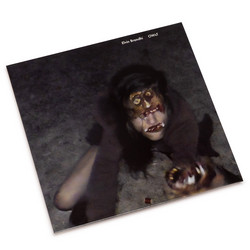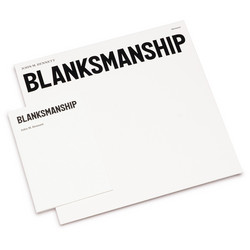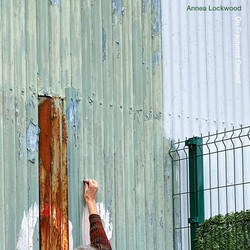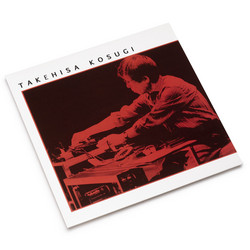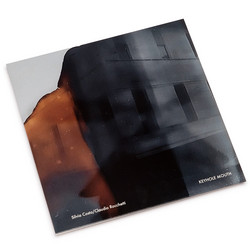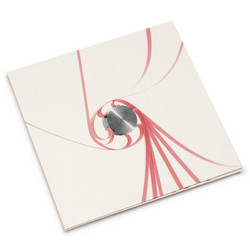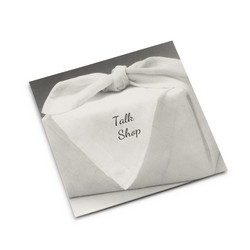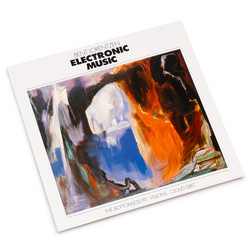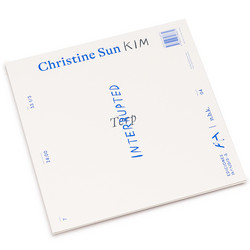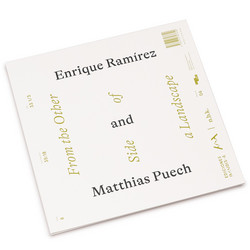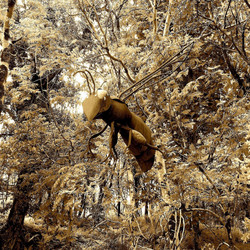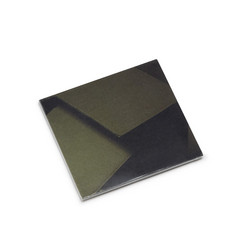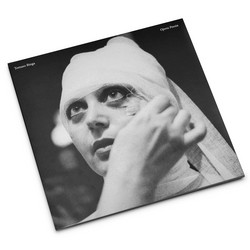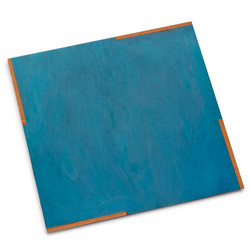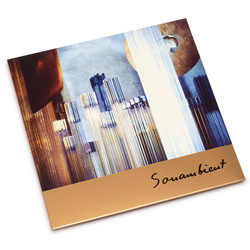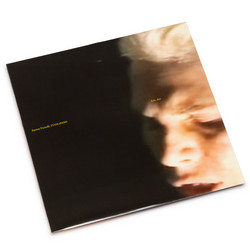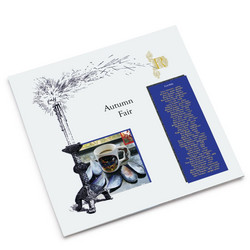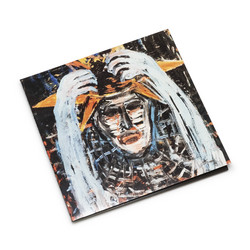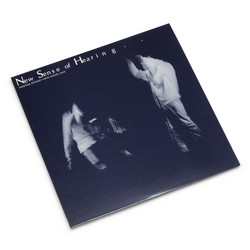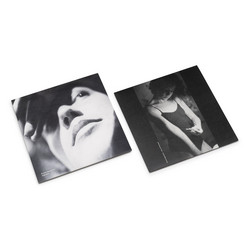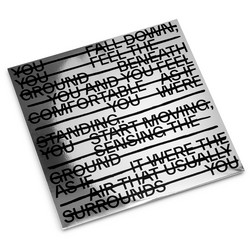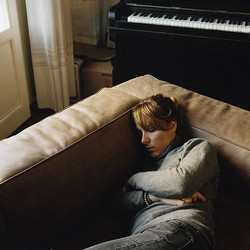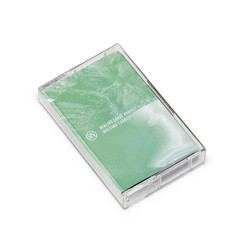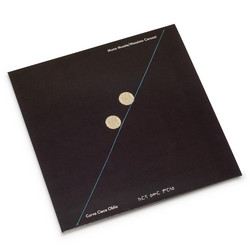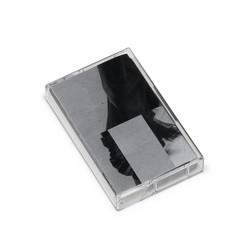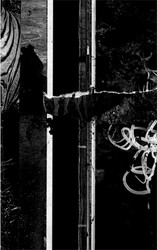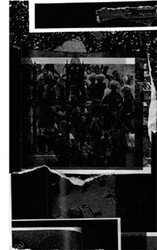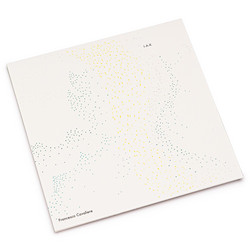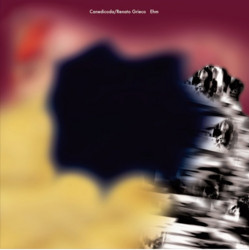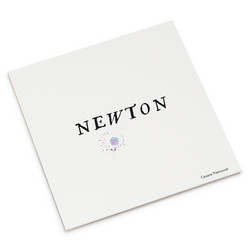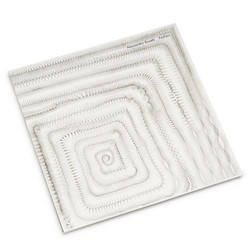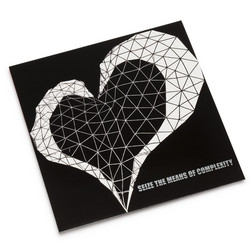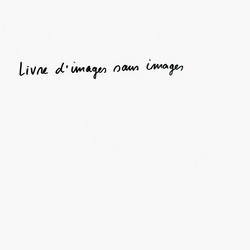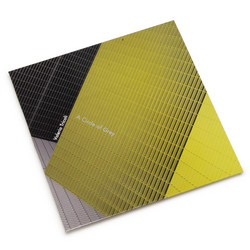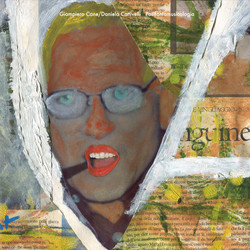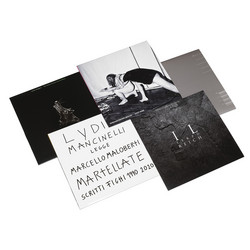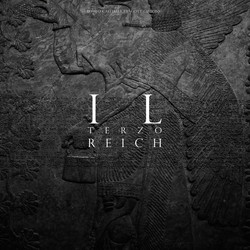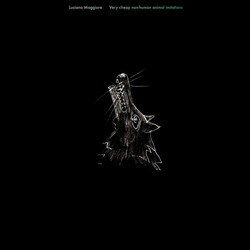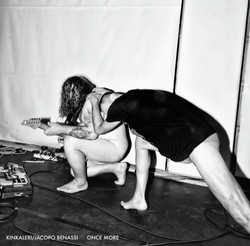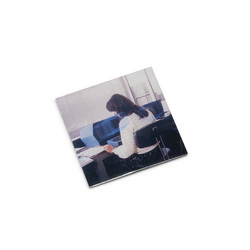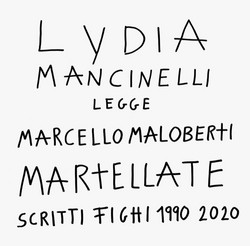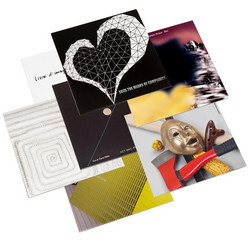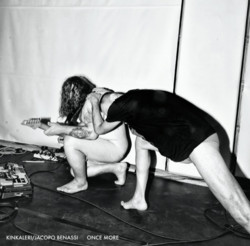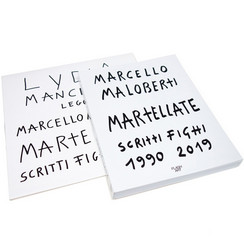Muna Mussie, Massimo Carozzi
Curva Cieca Oblio ኩርቫ ዕውር ምርሳዕ (LP, White)
Tip! 150 copies limited release
Xing presents the new LP Curva Cieca Oblio ኩርቫ ዕውር ምርሳዕ by Muna Mussie and Massimo Carozzi, twelfth release of XONG collection - artist records. The release is on white vinyl, in a limited and numbered edition of 150 copies, together with a print run of 15 collector's editions, each accompanied by a black fabric envelope containing the words of the piece Cieca, that refers to a popular song of Italian colonialism, embroidered in gold thread. The album cover is a work by Muna Mussie: Oblio/Gold.
Curva Cieca Oblio ኩርቫ ዕውር ምርሳዕ was born out of the collaboration between two artists whose paths have intertwined many times over the course of twenty years. The work of Muna Mussie, who investigates the languages of the visual and performing arts, for this creation on record extends and enters into a fusional dialogue with the rigorous and prismatic sound vision of Massimo Carozzi, also an explorer of the relationships between different languages. Mussie's research obstinately escapes the literality of meaning, and in Curva Cieca Oblio the material questions the spirit to bring different collective and personal oblivion to light and deconstruct macro narratives. Textile art and embroidery are some of the techniques used by the artist to highlight the visible, the invisible and the tactile.
Consisting of three parts, the album opens with Cieca, a sonic illusion of any progress. Cieca moves blindly within the grammar of an adverse text and a continuous stumbling demolishes its meaning, recalling to the ear a sort of freestyle, a break dance of the word that introduces a rhythmic plan with its own sense and form. Cieca is the thread between the two subsequent pieces, Curva and Oblio, a traction between the different codes and practices that accompanied the production of this sound object. Curva is built on the fusion of a fragment taken from a piece of Tigrinya music with the mechanical rhythm of a sewing machine. This rhythmic homophony develops between asynchronies and coincidences, integrated by voices sampled inside a baobab-church during an Eritrean Coptic ceremony. The song resolves in a circular manner, supported by a pulsating bass line and articulated by a polyrhythmic guitar pattern. Curva seeks through repetition to capture and point to what escapes and at the same time presses on, to trace nomadic seams, distinctive signs or hybrids, manifested only in the syncopated and sobbing moment of time. “The stratifications of distant rites and objects stand out in the space of the present, to remind us of a memory, or to forget oblivion”. The long apnea of Oblio comes from an action, a collective ritual, where a wall of fabric is the frame from which the voices and bare hands of the participants sew. The word OBLIO (Oblivion) spoken, written, vocalized, embroidered, lamented through word of mouth in its constant repetition becomes the body of a sound composition. In the version for the record of Oblio the performers were recorded separately, providing their materials subsequently organized into a composition based on a collection of iterations on which various parts, selected from the vocal improvisations, intersect. The layers thus obtained reveal the harmonic connections of the voices, and are based on compositional solutions that restructure disconnected vocal fragments, in an idea of reconstructing a collective breath. Curva, Curva Cieca, Oblio are also the titles of performances by Muna Mussie created between 2019 and 2023.
Muna Mussie is a multidisciplinary artist based in Bologna. Her work moves between gesture, vision and word, crossed by the practice of embroidery, and investigates the languages of the arts to give shape to the tension that arises between different expressive poles, private and public, memory and oblivion, visible and invisible. Recent performances and installations include: The Perfect Human from Sunrise to Sunshine (2023), Oblio/Pianto del Muro (2022), PERSONA (2022), FÒRO FÓRO (2022) Bientôt l’été (2021), PF DJ (2021), Oblio (2021), Curva Cieca (2021), Curva (2019), Oasi (2018), Milite Ignoto (2015). Among the exhibitions: ዳና ቦሎኛ | ﺑﻮﻟﻮﻧ'ﺎ ﺷﺎرع | Bologna St. 173 (2021-2023), Punteggiatura (2018). Her work has been presented in Italy and internationally at Art Fall/PAC Ferrara, Xing Raum and Live Arts Week Bologna, Fondazione Sandretto Re Rebaudengo Turin, Museo Marino Marini Florence, MAMbo Bologna, ArteFiera Bologna, HangarBicocca Milano, Museion Bolzano, Short Theater Rome, Mattatoio Rome, Black History Month Florence, Villa Romana Florence, MAXXI L'Aquila, OGR Turin, and Workspace Brussels, Kaaitheater Brussels, SAVVY Contemporary Berlin, Mucem Marseille. Muna Mussie was among the recipients of the Italian Council program (2022).
Massimo Carozzi is a sound artist, sound designer and musician based in Bologna, Italy. He explores the relationship between sound and image, sound and scene, sound and literature, sound and space. He is the author of documentaries and sound cartographies, and has been involved in the sound design of documentaries, films, theater and dance performances, solo and collaborating with writers, directors, choreographers, and visual artists. In 2000 with Anna Rispoli and Anna de Manincor he founded ZimmerFrei, with which he participated in group and solo exhibitions, film, music and theater festivals in Italy and abroad. He has participated in music and sound projects, including: El Muniria, Weight And Treble, Auriga, Phonorama, Auna. He has collaborated, in studio and live, with several musicians and artists including Starfuckers/Sinistri, Massimo Volume, 3/4HadBeenEliminated, Andrea Belfi, Stefano Pilia, Valerio Tricoli, Dominique Vaccaro, Emidio Clementi, Margareth Kammerer, Susanna La Polla De Giovanni, Muna Mussie. He has released records for Random Numbers, Second Sleep, Yerevan Tapes, Xing.



